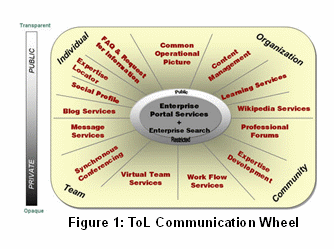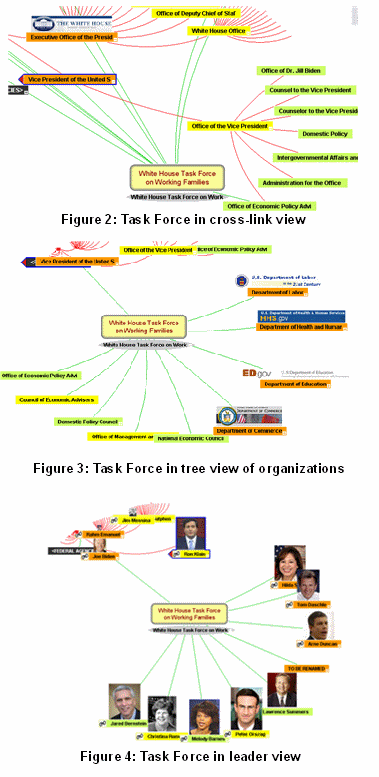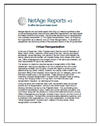At the end of December, 2008, President-elect Obama’s pick for Secretary of State, Hillary Clinton, made two critical picks of her own, naming dual deputy secretaries. James Steinberg, who served in the Bill Clinton administration as deputy national security adviser, will oversee foreign policy issues while Jacob Lew, Office of Management and Budget Director in the same administration, will have responsibility for day-to-day operations.
The decision to create two deputies signals a reorganization of the State Department. Naming two deputies is not only a departure from the current organization at State, but it is highly unusual with regard to all the current departmental org charts. Notably, however, two deputy chiefs of staff in the Executive Office of the President, Mona Sutphen and Jim Messina, were in the first wave of staff picks in mid-November. These actions are part of the impending “physical reorganization” of government, changes made by adding, moving, and merging boxes on an org chart. And that’s the way most reorganization happens—by rearranging the boxes.
During the same pre-Christmas news cycle, the transition team announced another kind of reorganization, naming a new White House Task Force on Working Families to be led by Vice President Biden. This coordinating body includes the secretaries of Labor, Health and Human Services, Education, and Commerce, along with the directors or chairs of the National Economic Council, Office of Management and Budget, Domestic Policy Council, and the Council of Economic Advisors. The task force connects existing leadership positions—and by extension their organizations—into a new configuration, an example of the “virtual reorganization” of government. Instead of moving boxes, virtual reorganization connects them.
The Imperative to Reorganize and Its Impossibility
The imperative to reorganize has never been stronger. In 2009, widespread reorganization is driven by the economic crisis, which touches all sectors, and the presidential transition, which touches most of them. A sudden and drastic retrenchment throughout public and private sectors creates de facto reorganizations and painful readjustments where fewer people are left to do more work (to say nothing of a growing pool of experienced people out of work). And, as Barack Obama takes his seat in the Oval Office, many anticipate transformations, read reorganization, in government as well.
While the new administration heralds momentous changes in governing, it also confronts an intractable organizational structure, albeit full of highly-competent and well-meaning people. As the economic crisis unfolds, this scenario will play throughout the public and private sectors as new leadership and old face the same reorganization imperatives and impossibilities.
“Virtual reorganization” is a response to the need to quickly reorganize a rigid structure designed to change slowly. The term seems to have been introduced in 2000 by then-GSA Administrator David Barram, an “e-gov” (as in electronic government) visionary who spearheaded the President’s Management Council’s development of Firstgov.gov. Now USA.gov, and still run by GSA, this web-based portal to the government was set up to serve diverse audiences of citizens, organizations, government employees, and visitors. At the time of its launch, Barram make the bold claim that virtual reorganization would “make the physical reorganization of government unnecessary.”
As part of its 2004 Presidential Transition Series, the IBM Center for The Business of Government published “Government Reorganization: Strategies and Tools to Get It Done,” outlining four driving forces for reorganization: “To make government work better, to save money, to enhance power, and to address pressing problems.”
The report’s author, Hannah Sistare, who at the time of its writing was executive director of the National Commission on the Public Service, charts the course of reorganization strategies over the 20th century, tracing four historical approaches: Commissions, Presidential Reorganization Authority, Executive Branch Reorganization Staff, and Congressional Initiatives.
Bottom line is this: It is really, really hard to reorganize the physical structure of government by shuffling, merging, and separating organizational units.
In the report’s third section, “Government Reorganization for the 21st Century” Sistare also uses the term “virtual reorganization,” referring to two approaches: “Virtual Reorganization through E-Government or by Coordinating Councils” and “(Physical) Reorganization by Commission or via Legislative Authorization.” Like Barram, Sistare points toward threading existing structures together through network-like overlays. No box-movement or elimination required.
We agree. Virtual reorganization is a simple and effective way to gain organizational advantage. Here we set out three strategies for achieving it.
Strategies of Virtual Reorganization
The three virtual organizing strategies that we see emerging are: (1) e-government, from both external and internal perspectives; (2) coordinating councils and communities of practice; and (3) collaboration with virtual teams of leaders.
Strategy One: E-Government, Externally and Internally
E-government (e-gov) is the term most commonly associated with the idea of virtual reorganization. Already implemented externally, the e-gov strategy has demonstrated the enormous potential of putting an easy-to-use lens on top of the government maze of functions. Sistare characterizes the e-gov strategy as a user-friendly “citizen’s portal” to government services, citing the example of Barram’s (now) USA.gov site. This external virtual reorganization allows user to look from the outside into specific points of contact within the government.
Likewise, the “Google for Government” law provides external transparency into government. The bipartisan Coburn-Obama Bill was the first law Barack Obama introduced when he came to the Senate. Officially the “Federal Funding Accountability and Transparency Act of 2006,” it directed OMB to create a searchable database of almost $3 trillion (in 2007 dollars) in federal grants. The legislation called for tracking contracts, earmarks, direct payments, and loans by January 1, 2008. OMB made its deadline (see www.USAspending.gov for the result of this important piece of 21st-century legislation).
This e-gov spending-tracking capability should be put to immediate use in following the now over $3 trillion (end of 2008) in principally financial-rescue funding, and the many billions more in stimulus spending slated for 2009. Such insight into where our federal dollars are being spent not only adds to transparency and trust, but it also has the potential to engage many more minds in understanding how the whole program works, its interdependencies, and how it can be improved—quickly.
While external e-gov helps people outside by masking the complexity of government through a service-oriented user-friendly interface, internal e-gov helps people working for the government manage, not mask, the inescapable complexity of the real government. Internal e-gov offers an array of information and knowledge management services that support—and make more transparent--the inner workings of government.
 One example of the internal e-gov strategy is reflected in a range of US
Army services supporting people in their many organizational roles.
The “Teams of Leaders (ToL) Communication Wheel” was
developed as part of the “Teams of Leaders Handbook” and
depicts the emerging service-oriented framework for the Army’s
multitude of internal information and knowledge management services
(Figure 1). The wheel segments services according to four types of
customers, four roles in which people have internal information
needs:
One example of the internal e-gov strategy is reflected in a range of US
Army services supporting people in their many organizational roles.
The “Teams of Leaders (ToL) Communication Wheel” was
developed as part of the “Teams of Leaders Handbook” and
depicts the emerging service-oriented framework for the Army’s
multitude of internal information and knowledge management services
(Figure 1). The wheel segments services according to four types of
customers, four roles in which people have internal information
needs:
-
Individuals,
-
Organizations,
-
Communities, and
-
Teams
In more progressive information and knowledge management organizations, technologies, beneath the view of the user, may change while the service-oriented user interface continues to improve at the surface. This same service framework can apply throughout government, or to any large enterprise growing its internal capability. A technology-supported path to virtual reorganization internally and externally is the foundation for the successful use of the other virtual reorganization strategies.
Strategy Two: Coordinating Councils and Communities of Practice
Emerging as the leading fix for the ever-increasing complexity of government, the creation of coordinating councils and communities of practice represent the second strategy for virtual reorganization.
Matrix organizations are relatively primitive forms of virtual reorganization that show up in unusual places. An early and persisting example is the Joint Chiefs of Staff, a “coordinating council” that has been baked into the institutional structure of the Defense Department through matrix reports.
Examples are councils like the President’s Management Council of Deputy Secretaries and other COO-type positions. A “coordinating council” established by 2004 legislation is the Office of the Director of National Intelligence, that coordinates an “intelligence community” of sixteen intelligence agencies. Also indicative of this trend is the new charge handed to Carol Browner in her Executive Office assignment to link energy, climate, and environmental functions.
 The
new VP-led White House Task Force on Working Families layers over the
hierarchy in three ways: as a network of cross-organizational links
(Figure 2), as a tree of coordinating organizations (Figure 3), and
as (Figure 4) people sitting at the same leadership table. The
screenshots taken from our digital map of the government structure
show three views of the same network.
The
new VP-led White House Task Force on Working Families layers over the
hierarchy in three ways: as a network of cross-organizational links
(Figure 2), as a tree of coordinating organizations (Figure 3), and
as (Figure 4) people sitting at the same leadership table. The
screenshots taken from our digital map of the government structure
show three views of the same network.
Such federal government councils are formal, issue-based, cross-organizational networks. And early signs indicate their role and number will expand greatly in the Obama administration.
In contrast to e-gov strategies that sort out underlying complexities for users with a service overlay, the coordination strategies require an accurate map of the organizational topography to enable smart network coordination. If not visible and mapped, these overlapping networks will sow confusion rather than plant guidance and encourage collaboration.
Coordination does not mean control; rather, it points toward influence and reciprocal leadership. A coordinating network respects the independent nature of its members while seeking to increase fruitful cross-links. When done properly, it results in better functioning, lower cost, more power, and/or the ability to quickly address a pressing problem. For such approaches to be successful, members need a shared mental model of themselves as a coordinating body and of the larger context in which they seek coordination.
Unfortunately, many cross-government coordination efforts attempt to function with flawed “organizational awareness” of the hierarchical topography. Organizational awareness complements the military imperative to maintain “situational awareness” of the physical environment. All governments, with their rooted, physical boundaries from large (national) to small (local) scales, contain both organizational and physical topographies.
Coordination “czars” (in our view, a poor, misleading term that unfortunately has gained common parlance) and councils can be used throughout the government hierarchy at all levels—even, importantly, across levels. Here, the Google Earth-like map of the bureaucratic topography can serve as a common framework for layering on any combination of coordination networks. A “digital org chart” easily tracks these network layers along with the changing physical topography of the government (see NetAge Report #1).
Councils are centralized coordination structures. There are also complementary structures of massive decentralized cross-organizational coordination, seen in the use of social media to support functional and issue-based online “communities.” Prominent among these is the Army’s extensive array of professional forums, well illustrated by “CompanyCommand.com.” The commitment and enthusiasm of those involved in this cross-Army effort are reflected in its homepage description: “a grass-roots, voluntary forum that is by and for the profession with a specific, laser-beam focus on company-level command. By joining, you are gaining access to an amazing community of professionals who love Soldiers and are committed to building combat-ready teams.”
Intellipedia is another example of virtual reorganization that taps the wisdom of the inner crowd through the use of user-generated media. Shared across the US intelligence communities, this wiki runs on two levels of security and access. If the intelligence community can offer itself up as a virtual organization, then we have to believe that any part of the government can.
Through forums, wikis, blogs, facebooks, and other social media engaged for organizational purposes like these two examples, the “edge-in” mass of people in the organization gains a voice, exchanges information, and rapidly solves problems. The combination of these two approaches to coordination—the “center-out” coordinating council approach together with an “edge in” community of practice approach—is the network equivalent of hierarchy using both “top-down” and “bottoms-up” approaches to coordination.
Strategy Three: Collaboration with Virtual Teams of Leaders
Between the large abstract organization and the concrete individual person doing a specific job lies the small organizational workhorse, the team. Driven by the same forces transforming hierarchy and bureaucracy, teams are under reinvention in the 21st century. A combination of new technology and advances in understanding human behavior results in a new kind of high-performing small group: the virtual team working as a “team of leaders.”
Teams are everywhere in organizations. A hierarchy is, by definition, a nested team of leaders. Everybody has a manager and is part of the management team formed by the group that reports to that position, whether those sharing the same boss are explicitly recognized as a team or not. Executives lead multi-level teams of teams. Everyone works in teams—even the board of directors and the cabinet of the United States.
The new wave of virtual reorganization has spawned countless more teams, particularly virtual ones that cross boundaries of space, time, and organization. Many people are now members of multiple teams simultaneously. People working at higher levels tend to be on multiple teams. “Team hubs,” someone who holds roles in many teams, are likely to be found at every level, just like “hubs in the hierarchy” (see NetAge Report #2).
The government offers an interesting example of virtual reorganization at the team level in its “Joint, Interagency, International, Multinational” (JIIM) teams. Such groups reach across radically diverse organizational lines, sometimes with no common root, comprising, for example, US combat forces in Afghanistan, that work with NATO, the other nations with forces stationed there, NGOs, local tribal leaders, and the Afghan government, among others.
The Obama Administration has indicated an expanded role, budget, and headcount for the State Department in leading America’s reengagement with the world, a position long-supported by the (old and new) Secretary of Defense, Robert Gates. Most of these new State positions, and many existing ones, will be reconfigured into JIIM teams, some of short duration, some slated to become permanent. It is essential that these teams learn the new behavioral rules of working virtually and collaboratively. Failure leads to dysfunction while success enables a level of performance and collaborative capability unachievable by traditional hierarchical, face-to-face teams.
Internal e-government information services support a wealth of collaboration tools at the most effective point of getting something done, where a team of people has common purpose. Creativity is charged with the virtual ability to bring in expertise wherever it is located and thus power innovation within the team.
We must emphatically restate what we’ve written in so many other places: the benefits of virtual work and collaboration do not flow from technology but rather from the new behaviors needed to work in and across networked organizations. Perhaps the most important of these behaviors is expanding leadership beyond the hierarchical model. Without changed ways of working and leading, technology is poorly applied and often destabilizing, destroying capability rather than creating more efficiency and effectiveness.
Process of Virtual-to-Physical Reorganization
Virtual reorganization strategies are not either-or approaches to improved governmental design. Rather the strategies form a development sequence of increasing capability at both large and small scales of organizational structure. Together, these strategies create a process that runs from e-gov to concrete reorganization by traditional means.
An e-strategy establishes an increasingly capable technology, information, and knowledge infrastructure that enables its own species of virtual reorganization (e.g., user interfaces) while at the same time generating an environment for the growth of other strategies.
-
Coordination adds networked organizing elements to the hierarchy through centralized coordination councils and decentralized communities of practice. This increases problem-solving interactions at both the macro and micro scales of the organization.
-
Collaboration through teams supercharged with interactive technologies and the richly-linked, people-centered knowledge environment enable high performance across space, time, and organizational boundaries. This gets cross-boundary reorganization into the work-stream itself.
Ultimately, commissions of 21st-century government can build on the experiments, pilots, and successes of virtual reorganization to develop the case for significant physical reorganization by executive authority. Legislation is the last stop for making the most significant and long-lasting reorganizations, ideally structural changes well-honed and tested in earlier virtual processes of reorganization
All these strategies are sure to be in play in the early years of the Obama administration and will touch everyone wherever they work as the economic crisis that erupted in 2008 unfolds—and, with some good organizational thinking, will resolve more quickly than otherwise would be the case.
